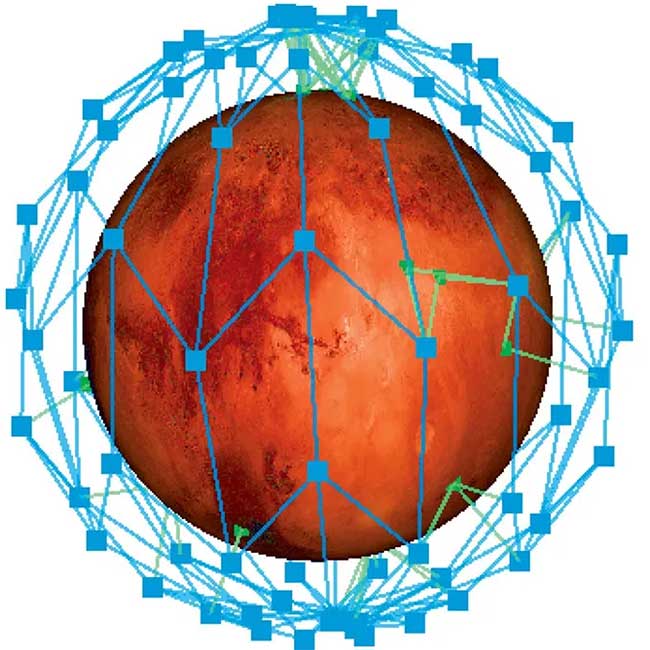While we have yet to set foot on Mars, our ambitions for this planet are undeniable.
With the continuous advancement of technology, it is likely that within the next few decades, astronauts will successfully land on Mars.

The dream of “strolling on Mars” may soon become a reality. (Photo: Science News).
At this stage, the first priority is to establish communication. Setting up an Internet network could be the solution to this issue.
However, connecting the Internet to Earth—which is hundreds of millions of kilometers away from Mars—will be impossible. Instead, astronauts will need a different strategy.
Data Transmission via Lasers in Space
Claire Parfitt, a systems engineer at the European Space Agency (ESA), emphasizes that establishing a robust communication infrastructure is essential for human missions to Mars.
Researchers are currently testing solutions to upgrade existing networks along with some alternative options.
For example, NASA’s Psyche mission, which initiated in October 2023, will experiment with interplanetary communication by using lasers. This is because lasers can carry more data than the radio waves that have been used since the early days of space exploration.

NASA’s Deep Space Optical Communication technology is testing laser communication over distances greater than the Moon. (Photo: NASA).
The use of lasers for communication in space is not a new concept, but it has never been tested over distances greater than the Moon.
This method has already shown some success. Notably, in mid-November 2023, the Psyche satellite transmitted data to Earth from a distance of 16 million kilometers—over 40 times farther than the Moon. In December, it continued to send another video from a distance of 31 million kilometers.
However, there are certain limitations, such as the requirement for high precision in signal orientation, vulnerability to cloud cover, and interruptions caused by specific atmospheric effects.
Bringing the Internet to Mars: A New Goal for Humanity
Future Mars explorers, not to mention potential residents, will certainly want to do more than just send messages back and forth.
They will desire a setup similar to Earth’s Internet—one that allows them to use it for various purposes, from sharing images to accessing massive databases.
In June 2023, Technische Universität Berlin (Germany) proposed that if a group of satellites could be deployed to orbit Mars, this could provide a viable Internet source.
Essentially, the proposed network would operate similarly to Starlink satellites operating in low Earth orbit and managed by SpaceX.
On Earth, satellite coverage for broadband Internet and mobile phones is very expensive. However, on Mars, such a system could be cheaper and easier to construct.

The idea of building a network of 81 satellites to provide Internet coverage for the entire Mars. (Photo: Satcom).
After conducting calculations, Tobias Pfandzelter and David Bermbach, two cloud computing experts from Technische Universität Berlin, concluded that a total of 81 low-orbit satellites around Mars would be needed to provide full coverage of the planet.
This system would offer a local communication network and serve as an extension of the Internet on Earth.
“Interestingly, it would provide a ‘zero-latency’ experience similar to watching a movie on Netflix,” Pfandzelter shared. “That’s because all your data would be stored locally.”
According to this expert, putting Internet satellites into orbit around Mars would also be a more economical solution since it does not require infrastructure on the surface—where landing equipment could consume a significant portion of the mission budget.
Many may argue that the idea of building a functioning system on Mars is far-fetched, especially since we have yet to set foot on the planet.
However, Tobias Pfandzelter disagrees. He believes that planning early for feasible solutions is crucial.
“It not only addresses challenges, but also benefits future astronauts on Mars and could even help them get there sooner,” Pfandzelter stated.
It is evident that before Neil Armstrong first set foot on the Moon during the Apollo 11 mission, NASA had already undergone 10 prior missions along with many other meticulous preparations.
In this new race, the competition interspersed with collaboration among nations is expected to shorten that process and potentially turn the dream of “strolling on the Red Planet” into a reality.





















































